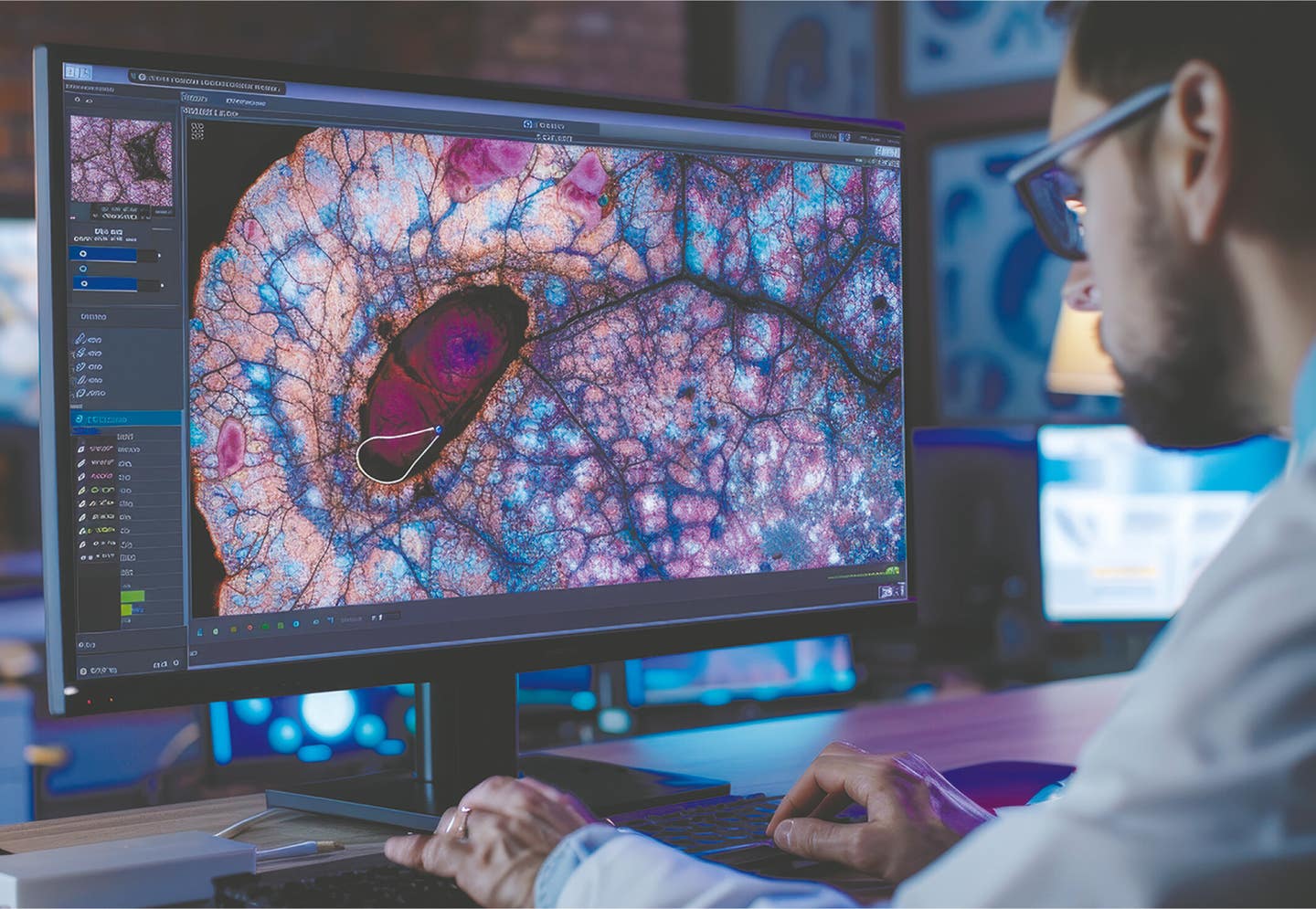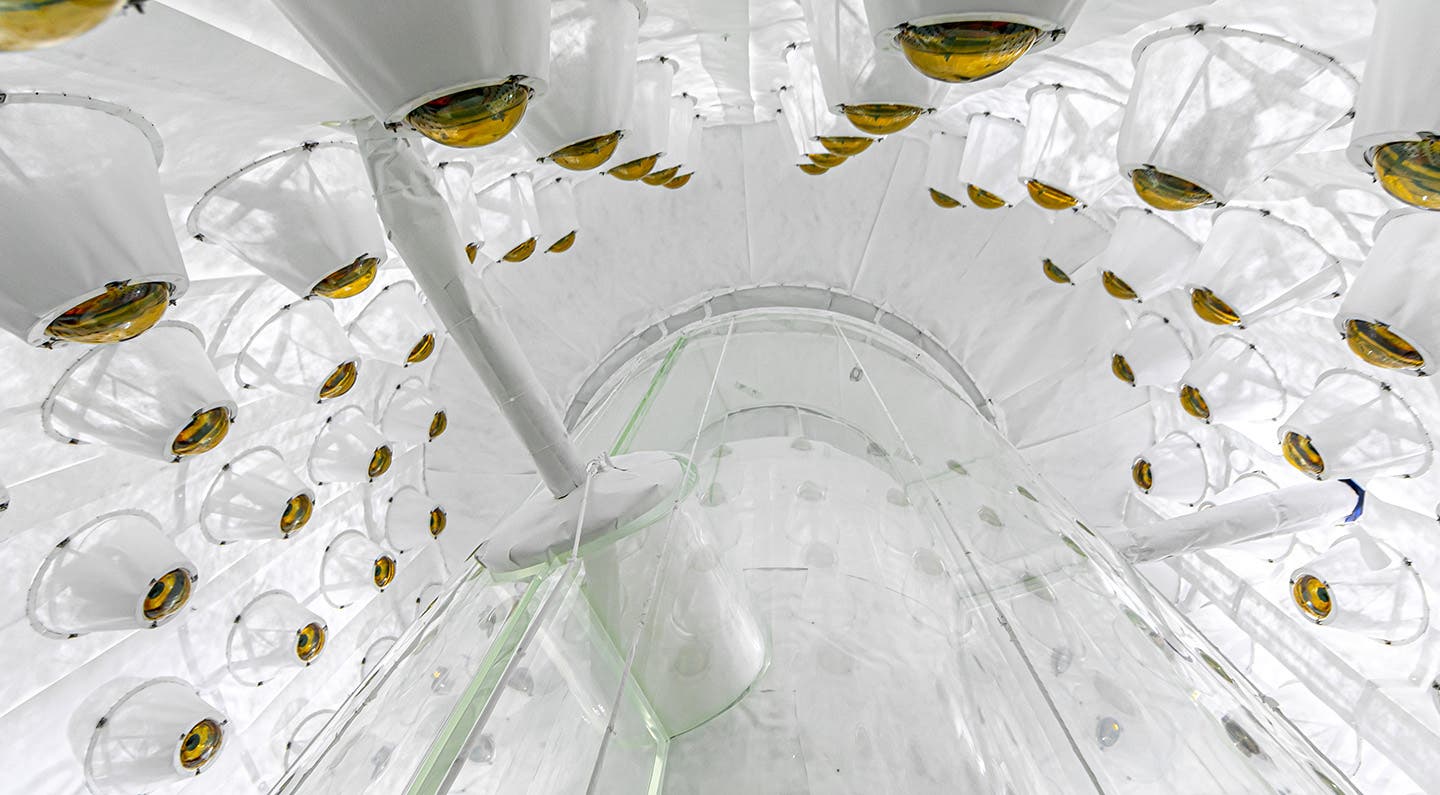New AI model detects more than 170 types of cancer with 97.8% accuracy
New AI model crossNN can identify over 170 tumors with 97.8% accuracy using DNA methylation data from various platforms.

A new AI model called crossNN can identify brain and other cancers using sparse DNA methylation data—no biopsy needed. (CREDIT: CC BY-SA 4.0)
In the high-stakes world of cancer diagnosis, getting the right answer quickly can mean everything. When a brain tumor shows up in an MRI image near delicate structures, even a simple biopsy might put a patient at serious risk. But what if doctors could look deep into a tumor’s genetic fingerprint without ever having to touch it?
That’s exactly what a new artificial intelligence model promises. Called crossNN, it’s been developed to revolutionize how tumors—especially those in the brain—are diagnosed. Instead of relying on risky biopsies or subjective microscope-based pathology, this tool uses patterns in DNA methylation to decode the identity of a tumor with stunning accuracy.
Reading the Tumor’s Epigenetic Fingerprint
At the heart of this breakthrough is DNA methylation, a type of chemical tag that controls how cells use their genes. These tags—small molecules known as 5-methylcytosine—sit on top of DNA and act like switches, turning genes on or off. In healthy tissue, these patterns guide normal development and cellular identity. But in cancer, those patterns change dramatically.
Each tumor carries a unique methylation pattern, like a molecular fingerprint. Scientists have long used these profiles to classify tumors, especially those of the brain, where traditional diagnosis can be difficult. The World Health Organization already recognizes DNA methylation-based classification as a key step in diagnosing central nervous system tumors.
Until recently, however, turning these fingerprints into a diagnosis required expensive equipment and large amounts of high-quality DNA. Most existing methods used DNA microarrays that scan specific parts of the genome. While these were effective, they could only work on fixed data from a single platform.
Newer sequencing methods like nanopore and bisulfite sequencing deliver sparser data, sometimes just a fraction of the methylation information, and often in different formats. That made them hard to compare—and harder to use for consistent diagnosis.
Related Stories
A New AI That Understands Sparse, Messy Data
The team at Charité – Universitätsmedizin Berlin, together with partners from the German Cancer Consortium and the Berlin Institute of Health, set out to fix this. Their goal was to create a model that could classify tumors even when the data was incomplete, low-resolution, or gathered by different methods. That’s where crossNN comes in.
Built on a simple neural network design, crossNN doesn’t need retraining for every new case. It can analyze methylation data from multiple platforms—including whole-genome bisulfite sequencing, microarrays, targeted sequencing, and even nanopore sequencing—and still deliver highly accurate results. It was trained on a vast collection of reference tumor methylation profiles and validated on over 5,000 samples.
When applied to brain tumors, crossNN hit a diagnostic accuracy of 99.1%. For over 170 different tumor types across all organ systems, it still reached an impressive 97.8% accuracy. This means the model doesn’t just work for brain tumors—it works nearly across the board.
“It’s a very precise diagnosis,” says Dr. Philipp Euskirchen, lead author of the study and a scientist at Charité’s Institute of Neuropathology. “It’s more accurate than the AI solutions at work to date.”
Diagnosing Without a Scalpel
One of the most exciting uses of crossNN lies in how it can help doctors avoid invasive procedures. In many brain cancer cases, collecting a tissue sample requires brain surgery. But some tumors release fragments of DNA into the cerebrospinal fluid, the clear liquid surrounding the brain and spinal cord.
That’s what happened with a patient who came to Charité complaining of double vision. A tumor appeared in a sensitive area of the brain, where surgery would have been dangerous. Instead, doctors sampled the patient’s cerebrospinal fluid and used nanopore sequencing to analyze the DNA. crossNN processed the data and identified the tumor as a central nervous system lymphoma—a type of cancer that responds well to chemotherapy. Treatment was started immediately, without surgery.
This kind of diagnosis is known as a “liquid biopsy,” and it represents a major step forward. “In some cases, even cerebrospinal fluid is enough,” says Euskirchen. “That means we can skip the operation entirely.”
Why It Works So Well
The model’s strength lies in its flexibility and speed. Traditional machine learning tools like random forest models were good—but often locked into one type of data. Others could handle new data, but needed to be retrained every time, slowing down the process.
crossNN solves both problems. It uses a neural network that can generalize across different methylation datasets and sequencing platforms. This allows it to instantly classify tumors without special adjustments or retraining. And unlike many AI systems, it’s also explainable. Doctors can understand why the model made a certain prediction—something that’s vital for real-world clinical use.
The model was built with both clinical accuracy and transparency in mind. “Although the architecture of our AI model is far more simple than previous approaches and therefore remains explainable, it delivers more precise predictions,” notes Dr. Sören Lukassen, head of the Medical Omics group at the Berlin Institute of Health.
From the Lab to the Clinic
The results from this study, published in Nature Cancer, are already being translated into real-world settings. Clinical trials are planned at all eight locations of the German Cancer Consortium. The team also wants to test how crossNN can be used during surgeries, offering surgeons immediate feedback while operating.
This approach could help personalize cancer treatment faster than ever before. Since every tumor has its own molecular traits, treatments need to be matched accordingly. Whether that’s choosing the right chemotherapy, targeting specific tumor pathways, or joining a clinical trial, an accurate diagnosis opens the door.
Prof. Martin E. Kreis, Chief Medical Officer at Charité, sees this kind of technology as the future of medicine. “Against the backdrop of increasingly personalized, rapidly developing cancer medicine, precise diagnosis at a certified tumor center is the way forward for successful treatment,” he says.
A Platform for the Future
The success of crossNN highlights a larger trend in oncology: the shift from tissue-based diagnosis to genome-based analysis. As sequencing becomes faster, cheaper, and more versatile, tools like crossNN will likely become standard in cancer centers worldwide.
Beyond its technical power, the model provides a more humane approach to diagnosis. For patients facing frightening symptoms and life-changing decisions, being able to get a clear, fast answer—without the risk of surgery—offers peace of mind.
And with accuracy levels nearing 100%, that clarity isn’t a dream—it’s now within reach.
Note: The article above provided above by The Brighter Side of News.
Like these kind of feel good stories? Get The Brighter Side of News' newsletter.



